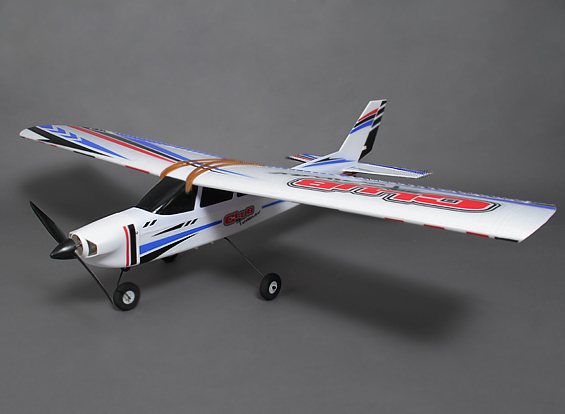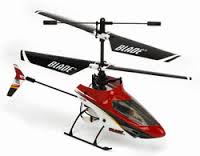Our Aircraft
Flight School 4 Kids has a fleet of approximately 30 small radio controlled aircraft for use by our students. These range from small trainers that can be flown indoors, to large systems for professional use. Our fleet makes sure we have the exact match needed for the skill level of every student.
Multirotor - Drones
 A multirotor or multicopter is a rotorcraft with more than two rotors. An advantage of multirotor aircraft is the simpler rotor mechanics required for flight control. Unlike single- and double-rotor helicopters which use complex variable pitch rotors whose pitch varies as the blade rotates for flight stability and control, multirotors often use fixed-pitch blades; control of vehicle motion is achieved by varying the relative speed of each rotor to change the thrust and torque produced by each.
A multirotor or multicopter is a rotorcraft with more than two rotors. An advantage of multirotor aircraft is the simpler rotor mechanics required for flight control. Unlike single- and double-rotor helicopters which use complex variable pitch rotors whose pitch varies as the blade rotates for flight stability and control, multirotors often use fixed-pitch blades; control of vehicle motion is achieved by varying the relative speed of each rotor to change the thrust and torque produced by each.
Due to their ease of both construction and control, multirotor aircraft are frequently used in radio control aircraft and UAS projects in which the names tricopter, quadcopter, hexacopter and octocopter are frequently used to refer to 3-, 4-, 6- and 8-rotor helicopters, respectively.
Pictured to the left is the newest addition to our fleet. This is a DJI S1000 octocopter used for professional filmmaking. This is an advanced system, with GPS and gimbal stabilized DSL camera. Students will advance to this level of flying if they desire. This sUAV is available to students who participate in Joey Travolta’s Inclusion Films program. It requires an FAA Remote Pilot Certificate when used for professional purposes which can be obtained by our students who study for the FAA examination.
Fixed Wing
 A fixed-wing aircraft is an aircraft, such as an aeroplane, which is capable of flight using wings that generate lift caused by the vehicle's forward airspeed and the shape of the wings. Fixed-wing aircraft are distinct from rotary-wing aircraft, in which the wings form a rotor mounted on a spinning shaft, and ornithopters, in which the wings flap in similar manner to a bird.
A fixed-wing aircraft is an aircraft, such as an aeroplane, which is capable of flight using wings that generate lift caused by the vehicle's forward airspeed and the shape of the wings. Fixed-wing aircraft are distinct from rotary-wing aircraft, in which the wings form a rotor mounted on a spinning shaft, and ornithopters, in which the wings flap in similar manner to a bird.
Glider fixed-wing aircraft, including free-flying gliders of various kinds and tethered kites, can use moving air to gain height. Powered fixed-wing aircraft that gain forward thrust from an engine (aeroplanes) include powered paragliders, powered hang gliders and some ground effect vehicles.
Pictured to the left is a radio controlled Club Trainer. These are large and easy to see. Gentle and easy to fly. It has small ailerons and other control surfaces that are forgiving to abrupt movement. The wings are attached with rubber bands so that in the event of a bad landing, they will more likely resist damage. In the event of damage, the fuselage and wings are made from foam, and easy and inexpensive to replace. Students often benign flight after simulator training with and easy to fly trainer such as this one. It is one of the favorite of our fleet.
Helicopters
 A helicopter is a type of rotorcraft in which lift and thrust are supplied by rotors. This allows the helicopter to take off and land vertically, to hover, and to fly forward, backward, and laterally. These attributes allow helicopters to be used in congested or isolated areas where fixed-wing aircraft cannot perform.
A helicopter is a type of rotorcraft in which lift and thrust are supplied by rotors. This allows the helicopter to take off and land vertically, to hover, and to fly forward, backward, and laterally. These attributes allow helicopters to be used in congested or isolated areas where fixed-wing aircraft cannot perform.
Flying a remote control helicopter is one of the more challenging remote control endeavors. Fortunately for the beginner, there are beginner models that are stable and easy to fly such as the Blade MCX2 Coaxial helicopter shown to the left. Coaxial rotors or "coax rotors" are a pair of helicopter rotors mounted one above the other on concentric shafts, with the same axis of rotation, but turning in opposite directions (contra-rotation). The inherent stability and quick control response make it suitable for use in small radio controlled helicopters. These benefits come at the cost of a limited forward speed, and higher sensitivity to wind. These two factors are especially limiting in outdoor use. Such models are usually fixed-pitch (i.e., the blades cannot be rotated on their axes for different angles of attack), simplifying the model.
Students progress from a coaxial helicopter, to a fixed pitch single rotor, and then a collective pitch. FS4K has 8 helicopters in our fleet, from beginner coaxial to 550 size collective pitch 3D machines.
The biggest problem with flying helicopters is orientation. The first exercise is tail in hovering, with the tail facing the student. When the helicopter is tail in, left is left, right is right, and forward is away from the student as you would intuitively guess. But when the helicopter is turned to the right or left, or nose in, left is no longer left, and right is no longer right, and the correct way to move the control stick is not easily known. Thus many hours of practice lead to orientation in all directions of hovering and flight.
Of course, orientation becomes even more complex when flying inverted (upside down), or backward, or upside down and backward, and then combining those moves in rapid aerobatic maneuvers. In the RC helicopter world this is known as "3D" flying, since it looks as though the helicopter is defying the rules of physics.
Most have never seen this type of flight. Shown below is a YouTube video of a 3D helicopter pilot doing high speed maneuvers over a lake at a very low altitude. It takes years of practice for someone to reach this level of skill.
Gliders
A glider is a heavier-than-air aircraft that is supported in flight by the dynamic reaction of the air against its lifting surfaces, and whose free flight does not depend on an engine.
Gliders can remain airborne for extended periods by using the lift produced by slopes and thermals. These can be winched into wind by a line attached to a hook under the fuselage with a ring, so that the line will drop when the model is overhead. Other methods of launching include towing aloft using a model powered aircraft, catapult-launching using an elastic bungee cord and hand-launching. When hand-launching the newer "discus" style of wing-tip hand-launching has largely supplanted the earlier "javelin" type of launch. FS4K has three gliders in its fleet.
While most gliders and radio controlled gliders are slow and forgiving, and easy to fly, it is easy to add challenges. Finding thermals requires much experience with the forces of nature. And gliders are the fastest flying model aircraft on record. Instead of seeking out thermals or slope flying, these pilots use a technique known as dynamic soaring or DS. Dynamic soaring is a flying technique used to gain energy by repeatedly crossing the boundary between air masses of significantly different velocity. Such zones of high wind gradient are generally found close to obstacles and close to the surface, so the technique is mainly of use to birds and operators of radio-controlled gliders, but glider pilots have occasionally been able to soar dynamically in meteorological wind shears at higher altitudes. The highest speeds reported are by radio-controlled gliders at 513 mph.
Shown below is a YouTube video of a DS pilot reaching 505 mph with a radio controlled glider that does not have any motor of any kind. DS soaring and 3D helicopter flying are two of many examples of how far a RC enthusiast can progress in skill level.